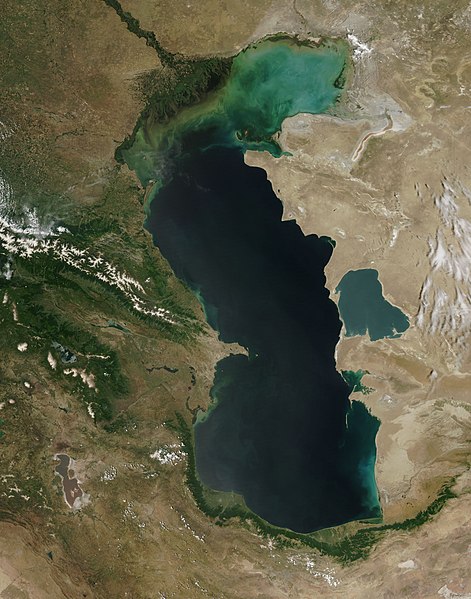File:Caspian Sea from orbit.jpg

Hafi nakpɔ alesi eƒe lolome le :471 × 599 pixelwo. Other resolutions: 188 × 240 pixelwo | 377 × 480 pixelwo | 603 × 768 pixelwo | 804 × 1,024 pixelwo | 1,609 × 2,048 pixelwo | 4,400 × 5,600 pixelwo.
Gbale adoduia (4,400 × 5,600 pixels, file size: 3.44 MB, MIME type: image/jpeg)
Nutsɔ ʋuvayiwo
Tia ŋkeke/gaƒoƒo ɖeka ne wòadi be yea kpɔ axa sia ƒe tata le ɣemaɣi
| Ŋkeke/Gaƒoƒo | Nɔnɔmetata sue aɖe | Goglome | Ezãla | Comment | |
|---|---|---|---|---|---|
| fifia | 09:16, 14 Masa 2010 |  | 4,400 × 5,600 (3.44 MB) | Originalwana | higher res |
| 15:10, 8 Dzodze 2005 |  | 550 × 700 (67 KB) | Pixeltoo | Caspian sea by space Nasa |
Nyatakagbaa zazã
Axa aɖeke medo ka kple fael sia o.
Xexe me godoo ƒe agbale zaza
The following other wikis use this file:
- Ezã af.wikipedia.org
- Ezã als.wikipedia.org
- Ezã am.wikipedia.org
- Ezã ang.wikipedia.org
- Ezã an.wikipedia.org
- Ezã arc.wikipedia.org
- Ezã ar.wikipedia.org
- بحر قزوين
- ويكيبيديا:صور مختارة/الفضاء والكون/نظرة إلى الخلف
- ويكيبيديا:ترشيحات الصور المختارة/بحر قزوين
- ويكيبيديا:صورة اليوم المختارة/ديسمبر 2016
- قالب:صورة اليوم المختارة/2016-12-23
- مستخدم:قائمة أكبر البحيرات والبحار في المجموعة الشمسية
- ويكيبيديا:صورة اليوم المختارة/يوليو 2020
- قالب:صورة اليوم المختارة/2020-07-16
- ويكيبيديا:صورة اليوم المختارة/يوليو 2023
- قالب:صورة اليوم المختارة/2023-07-26
- Ezã arz.wikipedia.org
- Ezã ast.wikipedia.org
- Ezã as.wikipedia.org
- Ezã av.wikipedia.org
- Ezã azb.wikipedia.org
- Ezã az.wikipedia.org
- Ezã bat-smg.wikipedia.org
- Ezã be.wikipedia.org
- Ezã bew.wikipedia.org
- Ezã bg.wikipedia.org
- Ezã bh.wikipedia.org
- Ezã bn.wikipedia.org
- Ezã br.wikipedia.org
- Ezã bs.wikipedia.org
- Ezã bxr.wikipedia.org
- Ezã ca.wikipedia.org
- Ezã ce.wikipedia.org
- Ezã ckb.wikipedia.org
- Ezã co.wikipedia.org
- Ezã cs.wikipedia.org
View more global usage of this file.


